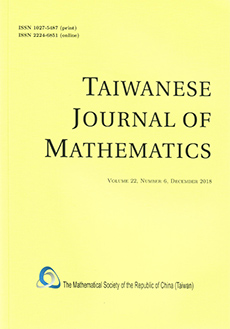Abstract
An $m$-coloring of a graph $G$ is a mapping $f:V(G)\rightarrow \{1,2,\ldots,m\}$ such that $f(x)\neq f(y)$ for any two adjacent vertices $x$ and $y$ in $G$. The chromatic number $\chi(G)$ of $G$ is the minimum number $m$ such that $G$ is $m$-colorable. An equitable $m$-coloring of a graph $G$ is an $m$-coloring $f$ such that any two color classes differ in size by at most one. The equitable chromatic number $\chi_{_=}(G)$ of $G$ is the minimum number $m$ such that $G$ is equitably $m$-colorable. The equitable chromatic threshold $\chi_{_=}^*(G)$ of $G$ is the minimum number $m$ such that $G$ is equitably $r$-colorable for all $r\geq m$. It is clear that $\chi(G)\leq \chi_{_=}(G) \leq \chi_{_=}^*(G)$. For $n\geq 2k+1$, the Kneser graph $\sf KG(n,k)$ has the vertex set consisting of all $k$-subsets of an $n$-set. Two distinct vertices are adjacent in $\sf KG(n,k)$ if they have empty intersection as subsets. The Kneser graph $\sf KG(2k+1,k)$ is called the Odd graph, denoted by $O_k$. In this paper, we study the equitable colorings of Kneser graphs $\sf KG(n,k)$. Mainly, we obtain that $\chi_{_=}(\sf KG(n,k))\leq \chi_{_=}^*(\sf KG(n,k))\leq n-k+1$ and $\chi(O_k)=\chi_{_=}(O_k)=\chi_{_=}^*(O_k)=3$. We also show that $\chi_{_=}(\sf KG(n,k))=\chi_{_=}^*(\sf KG(n,k))$ for $k=2$ or 3 and obtain their exact values.
Citation
Bor-Liang Chen. Kuo-Ching Huang. "THE EQUITABLE COLORINGS OF KNESER GRAPHS." Taiwanese J. Math. 12 (4) 887 - 900, 2008. https://doi.org/10.11650/twjm/1500404984
Information





